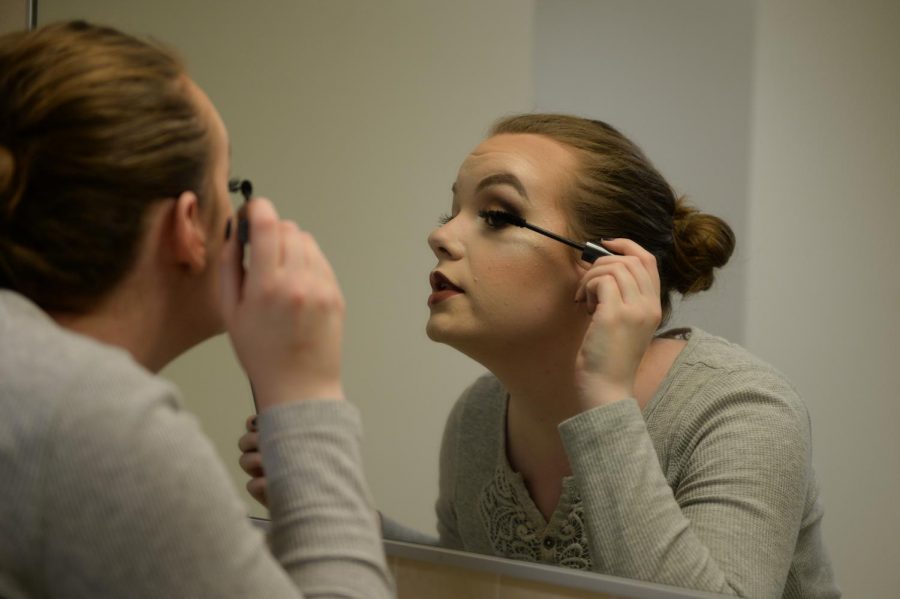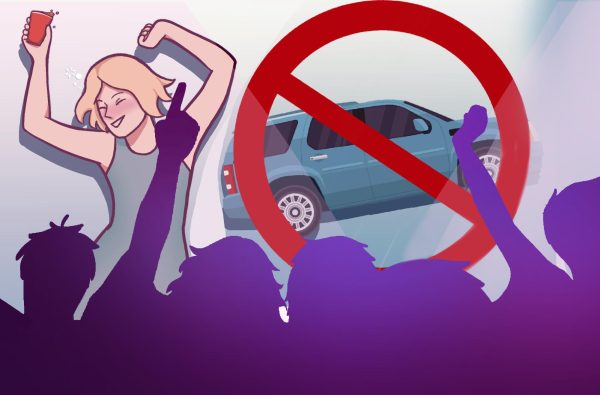Makeup works to express, not deceive
Cosmetics act as creative exercise, daily boost; not trickery to lure men to sneaky, ugly women
JACQUI THOMASSON | EVERGREEN PHOTO ILLUSTRATION
Instagram stars like Kim Kardashian have popularized full glam makeup looks, which involve techniques like contouring and baking.
February 22, 2019
Makeup offers a creative outlet for millions around the globe, and thousands around campus. Some wear mascara and concealer to feel more awake. Others spend time painting their eyelids brilliant shades as a form of self-care.
“I love full glam. It’s fun and if I look good, I’ll feel good,” junior communication major MyKel Johnson said. “There are days when I feel prettier with no makeup and I won’t wear any at all, but to me it’s an art — I love to see all the different looks I can create to express myself.”
I’ve worn makeup for over 10 years. I started with light powder foundation to cover my acne and with the lipsticks my mom didn’t want. Soon, I was wearing gray and green eyeshadow to school because it was fun and I thought I looked pretty. My initial intentions were to cover my face and change my appearance. I was hiding self-esteem issues with cosmetics.
I branched out to new techniques and learned to make art on my face. I learned where to put highlights and contours and what shapes suited my face best. I discovered the colors I liked and how to flick the perfect cat eye after years of practice.
And then I realized I didn’t need makeup as a crutch anymore. I stopped wearing it every day, and I still felt beautiful. I went almost a full semester without wearing makeup because, honestly, I didn’t have the time and I didn’t feel I needed it.
But I missed it so much. Spending two hours on a beautiful makeup look is the most calming thing I could spend my time on. It’s my therapy.
Makeup is a creative outlet and an art form to so many. YouTuber and first male Covergirl James Charles shows creative, colorful looks on his YouTube channel but goes about his daily life generally makeup-free.
“I actually don’t wear makeup on an everyday basis — I’m way too lazy to wake up in the morning. I need my beauty rest after late nights of tutorials and homework,” Charles said in an interview with Teen Vogue. “I love classic glam, but my favorite part about makeup is seeing where my crazy mind and blending brush will take me next.”
However, there is debate about whether changing one’s appearance with makeup is “right,” or if it’s “lying.” Nikkie de Jager, known as NikkieTutorials on YouTube, started “the power of makeup” trend in 2015, in which makeup wearers would apply full glam makeup to half of their face and leave the other half bare.
Many men responded with outrage. Commenters said they were being “catfished” by women who were not being honest about their appearance.
Makeup artist Povilas Staniulionis posted a side-by-side of a model with and without makeup on Reddit in 2013. Staniulionis faced backlash for presenting a “betrayal,” and putting a “mask” on the model to “deceive” onlookers, according to Daily Mail.
More recently, Asian women have been showing their makeup skills, sometimes using prosthetics and facial tape. The transformations are incredibly dramatic, and the popularity of the trend caused more upset.
“I really like this quote of, ‘Men aren’t really that smart if they assume that I naturally have gold eyeliner,’ ” Johnson said. “Women can do whatever they want with their bodies to make them feel confident. It’s their expression.”
Makeup trends have shifted dramatically over the decades, from the fair-skinned, skinny brows and red-lipped look sought after during the Hollywood era to the bare-skinned anti-cosmetics look of the 60s and 70s, according to Reader’s Digest.
Now trends change almost weekly with the popularity of social media. Contouring the face became incredibly popular around 2013, partially due to the Kardashians and makeup artists Mario Dedivanovic and Scott Barnes, according to Byrdie.
Instagram makeup followed quickly, bringing baking, color correcting and extreme highlighting with it, according to The Independent.
None of these techniques are new, however, and have existed just as long as the art has itself. Grease paints were initially used to contour actors. Drag queens have been baking their highlights into place for decades.
But these all lead to the question: Why do we wear makeup? The answer is different for everyone and has changed over the decades, but now it often comes from a place of confidence. Because we can.






















